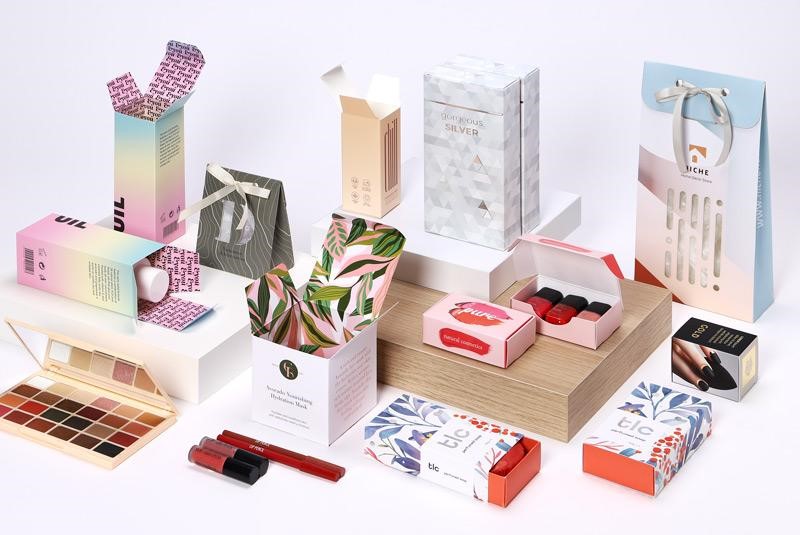There is always a debate on packaging’s role as a protection and presentation. In a cosmetic world, it whispers promises of beauty and luxury. Whereas, it vows for the safety of fragile products too. All of this suggests that packaging serves multiple purposes. Moreover, it is not just about what the customer sees and perceives. But, thoughtful packaging also focuses on how the product is transferred, stored and placed. All these requirements call for the need of different types of packaging for cosmetic products. There are two basic categories for cosmetic packaging. One is called the primary. While the other is known as secondary.
In this article we will explore the difference and importance of both the types. We will also discuss their definition and factors to consider while choosing any one of it.
Understanding primary cosmetic packaging?
Primary packaging is also known as the customer unit. It is a packaging that makes direct contact with the product. Also, it’s a first layer of protection and what the consumer interacts with when using the product. Examples of primary cosmetic packaging are:
- Bottles (for lotions, serums, perfumes)
- Tubes (for creams gels, lip gloss, mascara)
- Jars (for creams & body butter)
- Pump bottles
- Droppers
- Closures & Caps
What is the secondary cosmetic packaging
Secondary packaging is a box or container that encloses and protects the individual units of products. This type of packaging does not come in direct contact with the content. Despite product protection, this second line of defense organizes and presents the items in an appealing manner on a crowded shelf. This means, the secondary packaging is also an effective marketing tool. The most common examples for secondary cosmetic packaging are:
- Boxes (Folding carton, mailer, display &gift sets)
- Reinforcements
- Papers
- Bags
- Paddings
To be precise, primary packaging is about product protection, integrity and direct user interaction. While a secondary packaging is the extra layer of safety and brand presentation.
Key differences between primary and secondary cosmetic packaging (H2)
The difference between primary and secondary cosmetic packaging lies in three things. Its functionality, direct contact with the product and its purpose in the consumer journey.
Difference in Purpose
The visible difference in these two types of packaging is their functionality and purpose. The primary packaging protects the cosmetic formula from the external environment. Such as, air, light, moisture or contaminants that can compromise the product effectiveness. Whereas a secondary packaging is an additional layer that keeps the primary one intact. It provides protection against physical damage during transit, in storage rooms and retail shelves.
Different capacities for branding & marketing
The primary packaging has no special role in brand marketing. It only contributes to the product’s overall appearance. However, a unique style or design of a tube, jar or a bottle showcase brand’s luxury and identity. Whereas, secondary packaging serves as a canvas for storytelling. These are custom cosmetic boxes with logos, product information and marketing messages. The distinctive visual identity of secondary packaging plays a vital role in influencing consumer decision.
Information Display
The primary cosmetic packaging often lacks this feature. But, some brands who adhere to packaging regulations do mention some details. Like ingredients or expiry date. On the other hand the custom printed cosmetic boxes have clear and readable instructions. They state regulatory details, usage instructions, storage conditions and company details.
Difference in material
There is an obvious difference in both types of packaging. Since the basic purpose of a primary cosmetic packaging is the safety of cosmetic formula. Therefore, it is made from materials that are chemical free. Like, acrylic and glass. Whereas, the secondary cosmetic packaging is made from durable materials. Such as cardboard, Kraft paper or chipboard. You can also go for eco-friendly options like hemp, bamboo or bagasse.
How primary and secondary cosmetic packaging work together
Primary and secondary packaging work together to create an exclusive consumer experience. As the former builds a direct connection with a customer. The secondary packaging amplifies the brand’s message on a larger scale. Secondary packaging is designed with colors, patterns and logos. Which help the cosmetic brands to attract the customers and create a distinct market image. While the primary offers product transparency that further encourages the consumers to buy the product.
Factors to consider while designing cosmetic packaging
Before you place your order for cosmetic packaging. Make a draft of requirements. Like, what will be the size of your tube, bottle or box? What amount of quantity will it contain? What will be the shelf life of your item? What branding elements do you need for your packaging? Based on these conditions, you can decide your packaging. Like its material, dimensions, shape, style and manufacturing methods. However, prior to placing your final order do consider these factors:
- Your target audience and brand image
- Your budget
- Sustainability goals
- Regulatory requirements
Get your cosmetic packaging at affordable rates
You may encounter many suppliers who will be willing to offer a low cost packaging. But, there is a 90% chance that its quality will not be up to the cosmetic standards. In order to save you from this loss, we will suggest you to get your cosmetic packaging from Boxit Packages. They offer custom packaging boxes wholesale at economical rates. However, if you have a small business setup and need a smaller batch. Even then, Boxit Packages is a perfect pick. They offer a low MOQ of 100 boxes for new startups. With free samples and delivery in the USA.
Conclusion
If you want to have a credible image among your customers and increased sales. Then, pack for products in primary and secondary cosmetic packaging. It will maintain the quality and create a positive brand experience.
